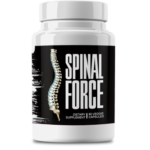This Village-Made Chinese Pain Reliever Eliminates Back And Joint Pain!
When to See a Doctor for Pain Behind Knee and Calf

Pain Behind the Knee and Calf: When Should You Worry?
That nagging pain behind your knee or calf - is it just soreness from yesterday's workout, or something more serious? Whether it's a dull throb after a long walk or sharp stabs that make climbing stairs a challenge, knowing when to tough it out and when to call your doctor can save you from bigger problems down the road. Let's break down what might be causing your discomfort, when it's time to seek help, and how to get back on your feet pain-free.
What's Behind That Ache? Common Causes Explained
Your knee and calf area is like a busy intersection where muscles, tendons, and blood vessels all meet. When something goes wrong here, it could be due to:
- Pulled muscles: Pushed too hard at the gym? Even weekend warriors can strain these sensitive areas.
- Baker's cyst: A squishy, fluid-filled bulge behind the knee that often tags along with arthritis.
- Blood clots (DVT): The scary one - a clot in your leg veins that needs immediate attention.
- Tendonitis: When those tough tissue bands get angry from overuse.
- Sciatica: Nerve pain that starts in your back but loves to vacation in your leg.
How Your Body Sounds the Alarm
Along with pain, watch for:
- Swelling that makes your skin feel tight
- Unusual warmth or redness
- Pins-and-needles sensations
- Trouble putting weight on the leg
Here's a good rule of thumb: If your pain fades with rest and ice, it's probably minor. But if it hits hard and fast with swelling or color changes, your body's waving red flags you shouldn't ignore.
When to Call the Doctor (Like, Right Now)
Some symptoms are your body's version of flashing emergency lights. Drop everything and seek medical help if you notice:
- Pain so bad you can't walk normally
- Chest pain or trouble breathing (could mean a clot moved to your lungs)
- A leg that's swollen, pale, or oddly cool to touch
For less dramatic but persistent pain - say it's been a week and that ibuprofen isn't cutting it anymore - it's smart to make an appointment. Ongoing discomfort might point to arthritis, a small tear, or other issues that won't fix themselves.
What Could Be Going On Inside?
The Blood Clot You Can't Afford to Ignore (DVT)
Deep vein thrombosis isn't just painful - it's dangerous. Watch for:
- One leg swelling more than the other
- Tenderness that feels deep under the skin
- Skin turning red or bluish
Baker's Cyst - The Knee's Stress Ball
These fluid-filled sacs are usually harmless unless they burst, which can feel scarily similar to a blood clot.
When Muscles and Tendons Rebel
Overdid it with the new running routine? Strains and tendonitis often heal with some TLC (rest, ice, and gentle stretches), but stubborn cases might need professional rehab.
What Happens at the Doctor's Office
Your doctor will likely:
- Ask about your symptoms and poke around the sore spots
- Order imaging tests (X-rays for bones, ultrasounds for clots, MRIs for soft tissue damage)
- Maybe draw blood to check for clots or inflammation
From Pain to Relief: Treatment Options
Your treatment plan depends on what's causing the trouble, but often includes:
- Home care: The classic RICE method (Rest, Ice, Compression, Elevation) plus OTC pain meds
- Prescription help: Stronger anti-inflammatories, blood thinners for clots, or muscle relaxants
- Physical therapy: Custom exercises to rebuild strength without reinjury
Keeping the Pain Away for Good
Prevention is always better than treatment. Try these pro tips:
- Strengthen your legs with calf raises and squats (but don't overdo it!)
- Invest in supportive shoes - your knees will thank you
- Take breaks if you sit or stand all day
- Stay hydrated and maintain a healthy weight
Your Top Questions Answered
Can bad circulation cause this pain?
Absolutely. Poor blood flow can lead to cramping and pain, especially when you're active.
Should I keep exercising through the pain?
Light activity like swimming might help, but if it hurts to walk, your body's telling you to take a break.
How long is too long to wait?
Severe symptoms? Get help now. Mild but lingering pain? Give it 3-5 days of home care before calling your doctor.
Listen to Your Body
Persistent pain, swelling, or color changes in your leg aren't just nuisances - they're important messages from your body. Catching problems early makes treatment easier and gets you back to your active life faster. Have you dealt with knee or calf pain before? What worked for you? Drop your experiences in the comments - your story might help someone else!








